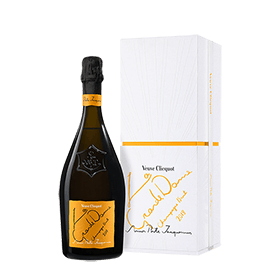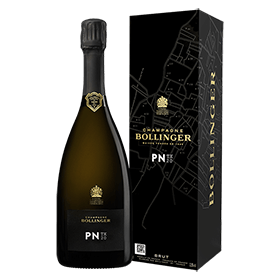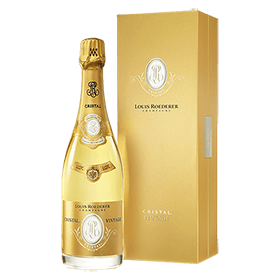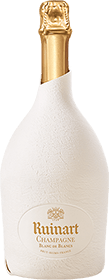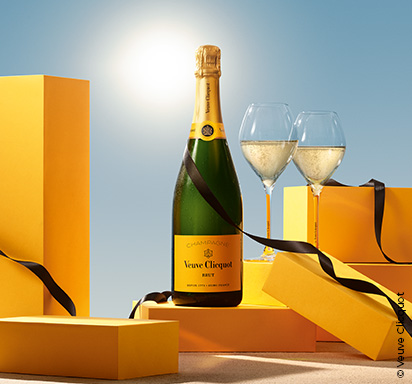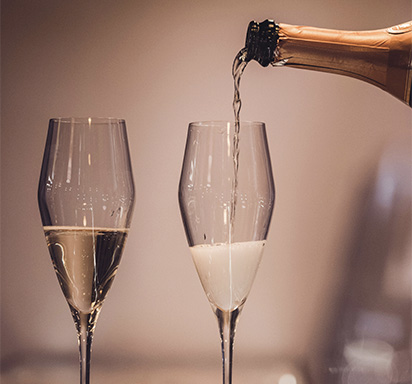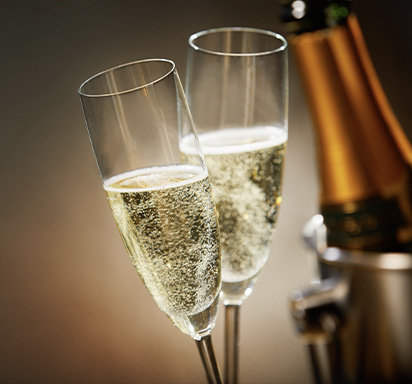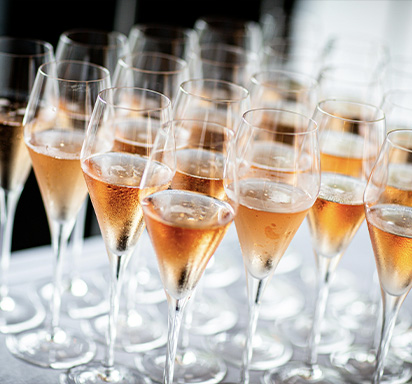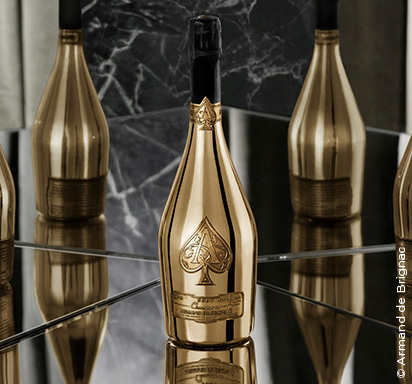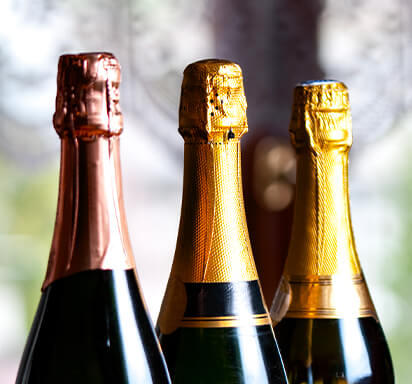Calories in Champagne: The nutritional content of your favorite bubbly
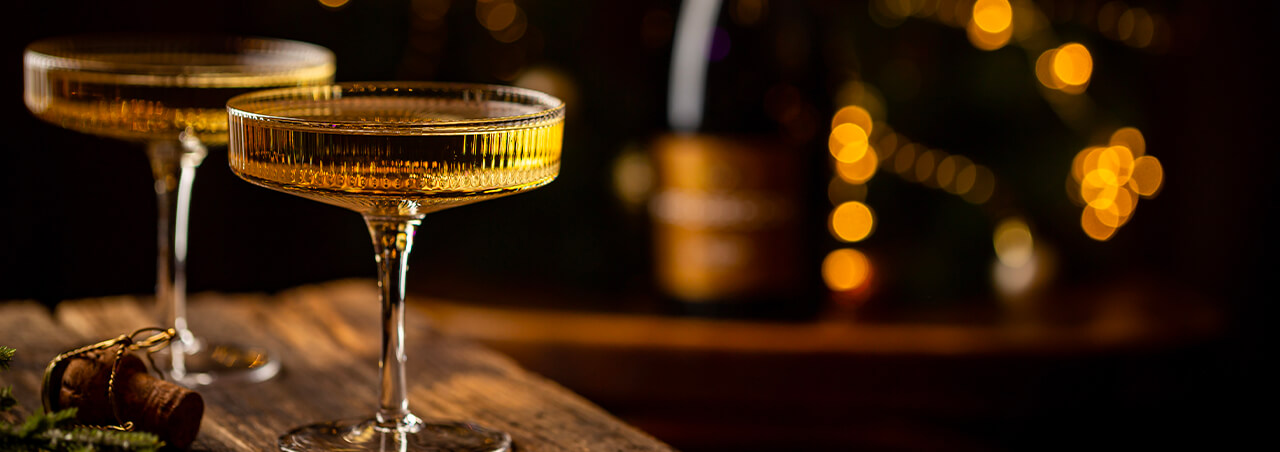
Available in a wide range of colors, styles and flavor profiles, Champagne has the power to make any moment truly unforgettable. But did you know that Champagne is also one of the wine styles with the fewest calories?
Nothing says celebration like the pop and fizz of a well-chilled bottle of Champagne. Available in a wide range of colors, styles and flavor profiles, this sparkling wine has the power to make any moment truly unforgettable. But did you know that Champagne is also one of the wine styles with the fewest calories? In this article, we take a look at the nutritional value of Champagne and take you through how to calculate the wine calories in a bottle of Champagne.
WHERE DO CHAMPAGNE CALORIES COME FROM?
To understand where Champagne calories come from, it is important to break down what exactly is in a glass of this widely beloved bubbly. Champagne is a sparkling wine produced in the Champagne region of France using the traditional method, whereby a secondary fermentation takes place in the bottle in which the wine is later sold.
Just as in the case of still red and white wine, Champagne first goes through an alcoholic fermentation, during which yeasts break down sugar naturally occurring in the grape juice and convert the latter into alcohol and carbon dioxide gas. This base wine is then filled into bottles and a liqueur de tirage (mixture of wine, sugar and yeast) is added to kick off the secondary fermentation, which creates bubbles. The dead yeasts (lees) are eventually removed before the bottle is sold.
In general, calories come from fat, protein and carbohydrates. While carbon dioxide does not contribute to the calorie count of Champagne, the alcohol and residual sugar (a carbohydrate) do. Generally, the higher the alcohol and sugar of a white wine, red wine or Champagne, the higher the calories count will be. To learn more about calories in red wine, take a look at our how many calories in red wine article!
CHAMPAGNE DOSAGE: FROM BRUT NATURE TO SWEET
As sugar is a key source of calories from carbs, a sweet wine will most likely have more calories than a dry wine. This is the case with all Champagne, red wine and white wine calories. During the production of Champagne, the winemaker can adjust the sweetness by the addition of a liqueur d’expedition containing a dosage, or sugar dissolved in base wine. The higher the dosage, the sweeter the Champagne and the greater the number of calories from carbs.
Different types of Champagne can be categorized by dosage. The sweetness levels of Champagne from sweetest to driest are:
• Doux = over 50 grams of sugar per liter
• Demi-sec = between 32-50 grams of sugar per liter
• Sec = between 17-32 grams of sugar per liter
• Extra Dry= between 12-17 grams of sugar per liter
• Brut = between less than 12 grams of sugar per liter
• Extra brut = between 0-6 grams of sugar per liter
• Brut nature = between 0-3 grams of sugar per liter
Brut champagne calories will tend to be higher in number than Brut Nature calories (with very little or no dosage) but much lower than calories in a “Doux” or Sweet Champagne. If you are looking for a low carb wine to drink as part of your diet, we recommend exploring the Brut Nature category.
HOW TO CALCULATE THE CALORIES IN A GLASS OF CHAMPAGNE
In order to calculate a glass of Champagne’s calories, we will consider the standard serving size to be 4 ounces, even though most Champagne flutes have the capacity to hold 6 ounces of liquid. Since the calories come from two sources (alcohol and sugar), we must first calculate the calories from each and then sum these two numbers.
• Calculating Serving Size Calories from Alcohol
When calculating the alcohol calories in your Champagne, consider that 1oz of pure ethanol alcohol contains a total of 158 calories. So, the equation is:
158 calories x alcohol by volume x volume = total calories from alcohol
Simply plug in the ABV of your Champagne and the volume of the wine in your glass to solve for the equation:
158 calories x 12/100 x 4 = 76 calories
So, your 4 oz pour of 12% ABV Champagne will have a total of 76 calories from alcohol.
• Calculating Calories from Carbs
To calculate the total calories from carbs in your glass of Champagne, remember that each gram of carbohydrates is equivalent to 4 calories from sugar? So, the equation is:
4 calories x carbs (in grams) per volume x volume = total calories from carbs
To find the number of carb calories in your glass of Champagne, simply plug in the total wine carb content of your bottle and solve.
4 calories x 1 gram/ oz x 4 oz = 16 calories
So, your 4 oz pour of Champagne will have a total of 16 calories from alcohol.
• Calculating Total Wine Calories
To find the calories in a glass of wine, simply add the calories from carbs and the calories from alcohol. In this case, your glass will have 92 calories.
SO HOW MANY CALORIES ARE IN A BOTTLE OF CHAMPAGNE?
Because of its relatively low alcohol and carb count, sparkling wine like Champagne is actually one of the best low calorie options in the world of wines. Most dry Champagne will have between 570 and 622 calories per bottle. You may also be able to find a specific weight loss Champagne with even fewer calories per bottle. Other low calorie wine options for healthier drinking include dry Sauvignon Blanc, Riesling and Merlot with lower ABV.
ARE THERE ANY HEALTH BENEFITS IN DRINKING CHAMPAGNE?
Besides the fact that a glass of Champagne contains fewer calories overall than many still white or red wines, this festive bubbly is also believed to have quite a few health benefits. Some researchers have suggested that, when consumed in moderation, Champagne can help improve short term memory and prevent dementia. Drinking a glass or two of Champagne may also be good for your heart and circulation, reducing the risk of cardiovascular disease or stroke.
The anti-oxidants in Champagne help detoxify skin, while the tartaric acid can have the effect of evening out your skin tone. And since the bubbles in Champagne wine tend to make people drink more slowly and feel full faster, they are also linked to the consumption of less alcohol overall.
Of course, it is always important to practice portion control with wine, and we do not recommend consuming more than three glasses of Champagne in one sitting. It is also important to stay aware of the fact that Champagne, like all alcoholic beverages, will lower your reaction time. Excessive consumption can have severe negative effects on one’s health. So remember to consume in moderation!
Find yourself asking “Where can I find champagnes near me?” Discover our extensive selection of Champagne and other sparkling wines from top producers like Veuve Clicquot and Dom Perignon Champagne. Do you have more questions about the nutritional value or calories in Champagne? Do not hesitate to reach out to us directly!
You may like
Discover the best champagnes under $100 — Moët, Veuve Clicquot, Ruinart, and Laurent-Perrier. Elegant, flavorful, and celebratory, they’re perfect gifts for wine lovers and anyone who cherishes the sparkle of fine champagne.
11/6/2025Brut and Extra Dry Champagne differ in sweetness, with Brut being drier and Extra Dry slightly sweeter. Learn their flavor profiles, food pairings, and which one suits your preference for celebrations and special occasions.
3/17/2025Prosecco and Crémant are both sparkling wines, but their differences lie in production methods, flavor, and origin. Learn about the Charmat and traditional methods, the taste profiles, and the best food pairings for each wine.
1/31/2025Whether you're hosting a small party or a large-scale event, Champagne is the perfect companion for any celebration. But do you know how many bottles to order for your event? Find out now!
1/17/2025Armand de Brignac, the "Ace of Spades," blends centuries-old winemaking by the Cattier family with Jay-Z's flair. Known for its luxurious taste and iconic hand-finished bottles, it offers five prestigious cuvées.
10/8/2024Nothing screams celebration quite like popping open a fine bottle of Champagne at one of your special events. But how do you choose a bottling that matches your event? For a wedding, a meal with friends or a birthday celebration..
4/3/2023



